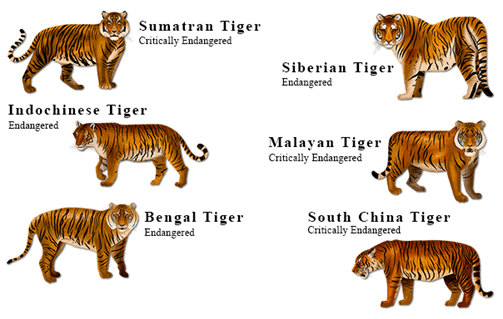

16th September 2022 (8 Topics)
Context
The latest positive development of re-introduction of Cheetah in India makes it important to know about the ‘seven big cats’ around the world.
|
Tiger, lion, leopard, and snow leopard are found in India. |
The Seven Big Cats are:
- Tiger
- Lion
- Jaguar
- Leopard
- Snow leopard
- Cougar
- Cheetah
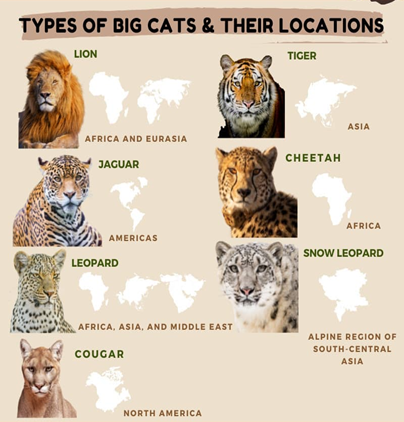
About
Tiger (Panthera Tigris)
- Tiger, (Panthera tigris) is the largest member of the cat family (Felidae) and also the earliest Panthera member to exist.
- Primarily a forest animal, they range from the Siberian taiga to the Sunderban delta.
- In the wild, tigers are found in India, Nepal, China, Russia, Bhutan, Myanmar, Cambodia, Laos, Vietnam, Thailand, Sumatra (Indonesia) and Malaysia.
- It is the national animal of India, Bangladesh, Malaysia, and South Korea.
- Status: Endangered
|
The five surviving sub species of tiger are
|
Lion (Panthera Leo)
- Lions are known as the "king of beasts" or king of the jungle". They are the second largest cats in the world after tigers.
- The lion is the most social cat, and lives in groups called prides. They prefer open forests such as scrubland.
- There are two broad types of lions: the African lion and the endangered Asiatic lion
- In 2020, the population of Asiatic lions has increased by almost 29% in Gujarat's Gir forests.
- The lion is arguably the most widely recognised animal symbol in human culture — be it the Ashoka pillar in Sarnath, the main entrance to Buckingham Palace, or the 20th Century Fox and MGM logo.
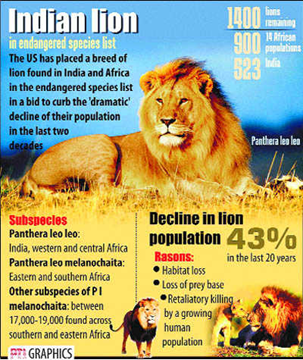
Jaguar (Panthera Onca)
- The largest cat in the Americas, the Jaguar has the strongest bite force of all wild cats, enabling it to bite directly through the skull of its prey.
- Melanistic (black) Jaguars are common and are often called black panthers.
- Jaguars are found in South and Central America, preferring wet lowland habitats, swampy savannas, and tropical rain forests.
- The jaguar is listed as Near Threatened on the IUCN Red Listacross its entire range.
- The jaguar is the most water-loving cat in the big cat family.
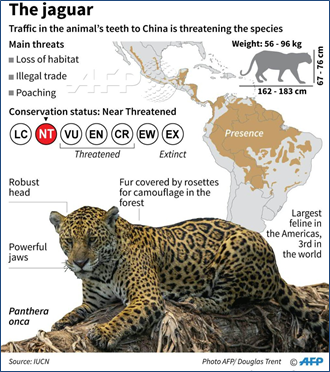
Leopard (Panthera Pardus)
- The leopard is similar in appearance to the jaguar but has a smaller and lighter physique.
- The spots on its coat are smaller and more densely packed than those of the jaguar.
- The leopard has the widest distribution range of all wild cats.
- The leopard is under threat and listed as Vulnerable on the IUCN Red Listacross its range.
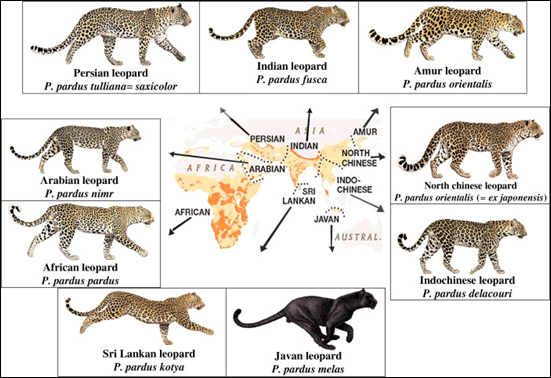
Snow leopard (Panthera Uncia)
- Snow leopards (Panthera uncia) are considered medium-sized cats, standing about 24 inches at the shoulder and weighing around 30-55kg.
- Status:The snow leopard is listed as Vulnerable on the IUCN-World Conservation Union’s Red List of the Threatened Species.
- In addition, the snow leopard, like all big cats, is listed on Appendix I of the Convention on International Trade of Endangered Species (CITES), which makes trading of animal body parts (i.e., fur, bones and meat) illegal in signatory countries.
- It is also protected by several national laws in its range countries.
- Habitat:Snow leopards can be found throughout high mountain ranges, including the Himalayas and the southern Siberian Mountains in Russia.
- They can also be found in the Tibetan Plateau and across a range that stretches from China to the mountains of Central Asia.
- In India, their geographical range encompasses a large part of the western Himalayas including the states of Jammu and Kashmir, Himachal Pradesh, Uttarakhand and Sikkim and Arunachal Pradesh in the eastern Himalayas.
- The snow leopard is the state animal of Ladakh and Himachal Pradesh.
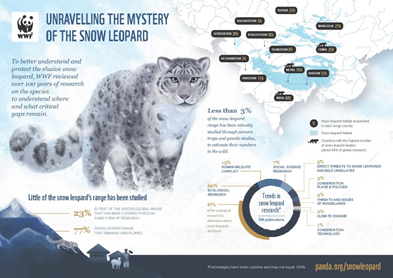
Cougar (Puma concolor)
- Closely related to the domestic cat, this genus has only one extant species, the cougar.
- The cougar is the second-largest cat in the Americas. (The Jaguar is the largest.)
- Cougars are also called ‘mountain lion’ and ‘panther’ across their range from the Canadian Yukon to the Southern Andes.
- Concolor is latin for “of uniform colour”.
- Status: Least Concern
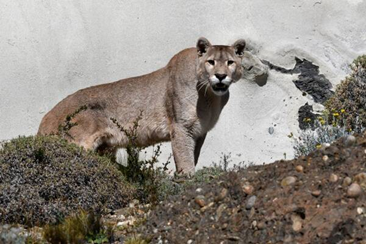
Cheetah (Acinonyx jubatus)
- The cheetah, Acinonyx jubatus, is one of the oldest of the big cat species, with ancestors that can be traced back more than five million years to the Miocene era.
- The cheetah is also the world’s fastest land mammal.
- It is listed as vulnerable in IUCN red listed species.
- The country’s last spotted feline died in Chhattisgarh in 1947. Later, the cheetah — which is the fastest land animal — was declared extinct in India in 1952.
- The Asiatic cheetah is classified as a “critically endangered” species by the IUCN Red List, and is believed to survive only in Iran.
- The cheetah is the only cat without retractable claws.
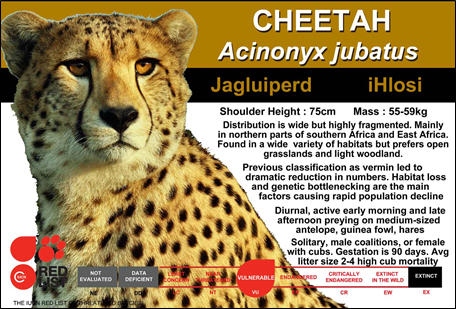
|
How cheetahs went extinct in India?
Cheetah in Indian History:
|
